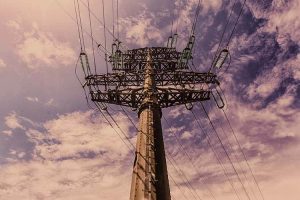
Body Voltage – What is it, what are the health effects, and how can we reduce it?
“We need to test the electromagnetic exposure of the sleeping location of the mother during pregnancy and also her working area, if she is working.
Pay in 3 interest-free payments on purchases from £30 - £2000 with PayPal
Technology is a beast that marches ever forward. While that’s usually to the benefit of our daily lives, it can also be to the detriment of our wellbeing. Are there implications to our health with the hew WiFi standard?
With the speed of wireless connections expected to triple by 2023, you’re right to be more aware of the potential hazards presented by WiFi EMF.
How well-founded are any potential fears you may have heard about EMF? With a brief summary of how the EMFs generated from WiFi work, we can look at what preventative measures we can take to protect ourselves.
Questions surrounding the safety of new technologies are often most difficult to answer. Not because fresh innovations haven’t had time to be analyzed, but because there will always be proponents who ignore the flaws.
There’s also the question of acceptable risk.
What sounds like an enormous health issue to one person may fall into the category of acceptable risk for another. We’ve seen that issue with 4G and 5G technologies already.
I’m sure that everybody can remember some of the craze surrounding the harmful effects of 5G. It led to people turning off the capability of their home routers.
Reportedly it cured people of headaches, insomnia, and a whole other slew of alleged ailments.
What is EMF, though? Why should you be worried about it?
We want to have a good understanding of the potential risks. It’s going to need digging through some information, though.
When researching EMF in relation to WiFi, the references to WiFi as being a radio frequency (RF) may be confusing.
EMF refers to radiation caused by all types of Electromagnetic Fields, whereas RF points to WiFi and a few other devices.
For the purpose of this line of questioning about the effects of WiFi, the terms are interchangeable but we will be sticking with EMF.
The other key piece of information about the topic is the type of radiation that is being generated. RF falls into the non-ionizing category. That’s the same category as microwaves.
It’s a worrying thought, the idea of being exposed to the same kind of radiation that a microwave produces. Even more concerning is if there’s a possibility that faster WiFi creates more EMF.
There’s something we should look at before jumping to conclusions, though.
Just how much EMF does a standard WiFi signal put out?
Before we start assessing increased risk from EMF radiation, we should establish a baseline first. That baseline will examine how much EMF is typically generated by WiFi devices.
Without getting too bogged down in technical details, even the risk presented by current-day routers and EMF is at a worrying number.
As we previously mentioned, it’s a largely ignored factor in our new lives. Every home has a router in it, and everybody walks around with a smartphone in their pocket.
All of these devices can be connected to a router, WiFi hotspot, or by throwing out an EMF-laced signal of their own to the surrounding area.
You can even purchase an EMF meter yourself just to see. It can be an eye-opener to realise that you’re surrounded by so much radiation.
The problem might not have been too severe in the more limited days of slower internet connections and weaker signals.
Nowadays, though, almost never be without near-maximum signal and lightning-quick speeds.
Building biologists, who make determining acceptable levels of EMF one of their main concerns, already think that routers without WiFi 6 are potentially putting out too much EMF.
That’s because even though the levels are ‘low’, they are still enough for our bodies to absorb. Especially when you consider the fact that you’re likely surrounded by multiple devices and signals all emitting EMF.
If we’re already at the point where it’s “too much,” then are they going to get much worse?
In the interconnected world that we all live in, it’s borderline impossible to imagine being without the internet. That means it’s here to stay, and so are upcoming advancements.
If you’re tech-savvy, you’ll already be familiar with the bands that WiFi currently works in, namely 2.4GHz and 5GHz. Is this expected to change with the introduction of WiFi 6?
WiFi 6 will actually still be working within the same bands and channels as its predecessor, so what’s the actual difference?
Well, you’ll be able to expect significantly increased speeds (up to 20%) on WiFi 6. That’s in addition to the throughput being notably improved, which will allow for more devices to operate at maximum capacity on the network.
If everything is still working on the same bands, does that mean that the EMF output is still relatively similar?
The answer to that question is that it depends. Each piece of electronics will differ slightly in the amount of EMF output. Your best bet is to use an EMF monitoring device to get an exact number.
Where it becomes more concerning is when you include WiFi 6E into the equation. This brother to the standard WiFi 6 also opens up traffic on the 6GHz band.
Again, you’ll need to measure the levels to see the difference. It seems fairly reasonable to assume that opening up an extra 1200MHz of scope is going to also increase EMF levels, though.
Don’t wait to be doused in EMF by the new WiFi standard. For the sake of your health, safeguard yourself against future developments with precautionary measures like meters and protective clothing from EMF Protection.
After all, it’s not only routers and EMF in your own home that you’ve got to worry about. Eventually, businesses and hotspots all over the world will be utilizing the new unimpeded 6GHz band.
Understanding the potential risks and getting ahead of them is the ultimate proactive remedy for the risks of the future.

“We need to test the electromagnetic exposure of the sleeping location of the mother during pregnancy and also her working area, if she is working.

36% of people in the UK struggle to fall asleep every week, but do you know why? Are you someone who checks your messages in

The rise of the internet and smart home devices is leading to an increase in WiFi radiation. How can this radiation affect your family? Here’s an explanation.

Did you know that the electromagnetic fields around you may have a link to cancer? Do you know what EMFs are at all? Most people don’t.
© 2024 All rights reserved EMF Protection Ltd